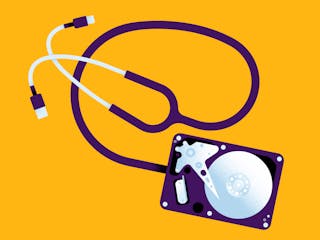Hi there!
This is the eleventh edition of D&T Special, a more in-depth view of topics that interest the Canvs team.
Today’s topic – Web browsers, and our changing relationships with them, along with the changing relationship of browsers with technology as a whole.
Note: If you are new here, we’d strongly recommend subscribing to the newsletter so you don’t miss out on the future updates. You can subscribe here.
✍️ From the Canvs Research & Editorial Desk
The meaning of personal computing is and has been shifting to a far more crowded and collaborative mode. This shift, particularly accelerated by a pandemic, has been the ideal breeding for web apps to serve as hubs for getting work (and life) done.
This week the Canvs R&E team has spent some time pondering this concept, let’s dive into some details.
Tools like Figma and VS Code have seen rapid growth and adoption to essential and have become industry standards. Notion has made management easy and accessible to individuals and teams, and even tools like to-do lists are benefiting from the rich web experience, not to mention another industry standard.
This trend seems to be indicative of greater browser use and less interaction with the native operating system applications. Browsers are no longer a window to the web; it is transforming into a workspace for both personal and professional lives of users.
How web apps are cutting above:
1. The web platform and where it’s at today
Developing and maintaining digital products is a complex undertaking. The platform a team chooses for their venture is a crucial decision as it decides a lot of other constraints. The web platform allows a lot more flexibility in terms of what you can and cannot do. Not requiring to adhere to any of the OS guidelines, the web experience is also easier to update and maintain. This has also pushed mobile apps to incorporate in-app browsers so that you don’t have to push app updates in a lot of cases, and with frameworks like React Native for mobile and Electron for desktop, teams no longer need to maintain dedicated teams for different operating systems.
A great case study to see what these experiences might look like is to see a note-taking app, Obsidian.md. Their mobile app is a port of their web app through Capacitor. This is really exciting for smaller teams as they can develop a rich experience regardless of the platform. Obsidian mobile has all the features of its desktop counterpart, even the support of custom CSS themes and external plugins, all of which are synced across multiple devices.
2. The web has relatively lower barrier to entry
The entry-level for using a web app has never been easier. With even content ever-present online thanks to Netflix, Google providing a highly robust office suite and messaging tools like Slack being deeply integrated across the internet, a user doesn’t have to install anything to get started. Browsers serve as workspaces and have more utilitarian purposes than just going from one link to another.
3. Tools and extensions
As mentioned before, browsers tend to outsource a lot of the functionalities to extensions — which in theory, is great and has worked for apps like Figma and VS Code.
📚 What we were reading this week
The DOJ is reportedly getting ready to file suit to block the $20 billion Adobe-Figma deal announced last year on the grounds it is anti-competitive.
How will AI impact the world of UI design/development? How will AI impact how design systems are created and used? Brad Frost, author of Atomic Design weighs in.
This onboarding case study shows how Bing’s new AI chat experience could be improved.
The era of American hegemony is ending. It is being replaced by a new geopolitical world order defined by great power competition and increased nationalism, a transition that will have enormous consequences for the global economy.
New details reveal that Beijing-backed hackers targeted the Association of Southeast Asian Nations, adding to a string of attacks in the region.
It’s been widely reported that Netflix’s ad-supported subscription got off to a slow start. So Netflix experimented with a simple design change, which doubled the popularity of the plan.
A look at how cultures communicate, how companies work, and how products are designed across the globe. The article also delves into scientific studies and looks at user interface examples to illustrate cultural uniquenesses.
Some highlights from the past month of D&T
And that’s the lot! Thanks for checking out what we had to share with you this week, we shall catch up with you next Wednesday. Incase you aren’t subscribed to the newsletter, you could subscribe here.
Also, please do let your friends know about D&T if they’d be interested!
Canvs Club





